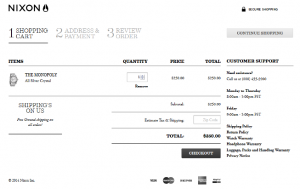by Jon Last, , Op-Ed Contributor, (April 13, 2016)
And therein was my indoctrination into the timeless conundrum of sports marketing, or any marketing for that matter … the classic and often futile search for true ROI assessment. The elephant remains in the room, that absent the deployment of extremely pricey and extensively controlled experiments and multi-variate tests that can cost a brand short-term visibility in the name of long-term discovery, it’s nearly impossible to measure the impact of a single marketing mix variable in isolation.
Yet, with dollars to be made and investments to be justified, the industry often relies solely on measures with questionable utility like simple reach, or ad equivalent calculations, which harken back to my former CEO’s comment. Worse still, is poorly constructed research that asks consumers to directly attribute a specific ad or activation on a future purchase process related action. While this purports to get at the impact question, its actual use in practice continues to confound me.
Step away from whatever device you are reading this on, look in the mirror and honestly ask yourself if you can cognitively discern whether the beer ad that you just saw made you crave that particular brand. If you’re still not convinced of the folly of that type of question structure, add the dynamics that those being asked such “research” questions are typically being baited with rewards and incentives to answer quickly and frequently, at the same time that there’s no masking of the brand in question. In essence, they are being asked by a proud new parent whether their baby is ugly.
So, faced with the challenge of justifying or measuring the success of their efforts, what is a savvy sports marketer to do? The first step towards resolution is to recognize what can and can’t be managed. Thankfully, there has been a welcome shift of late, to eschew the elusive ROI question to a more attainable search for ROO (Return on Objectives). That pursuit, in its own right, forces the critical step of determining which objectives are most important in a sports marketing investment.
Seeking to define and measure ROO acknowledges that marketing’s role in the process of selling something is not a linear path. Rather, it can incorporate such critical first steps as building awareness, which then may lead to better understanding of a brand’s differentiating attributes. It may need to first create a trusted relationship, laden with credibility, trust and comfort, before finally resulting in a sale. Sports marketing is particularly adept at accomplishing many of these objectives. But if all that one is doing is measuring impressions or attempting the short cut of the aforementioned direct attributional questions (Did this sponsorship make you buy the brand), the measurement exercise is a waste in research investment.
Sports marketing measurement begs for the more robust KPI of brand resonance. I speak of creating more attainable research tests that seek to uncover target fan, consumer or stakeholder emotion and connection to those attributes that a brand is seeking to convey about itself, relative to its competition. If we carefully “speak” with representative, relevant and equivalent groups of fans about the brands within a particular product category (obfuscating the activating brand) both prior to and after exposure to the sports marketing (and absent other potentially conflicting media mix elements), then we are beginning to really measure the impact of our efforts. We’re moving beyond the indigestible impressions to something we can actually sink our teeth into.
MediaPost.com: Search Marketing Daily
(60)
Report Post






